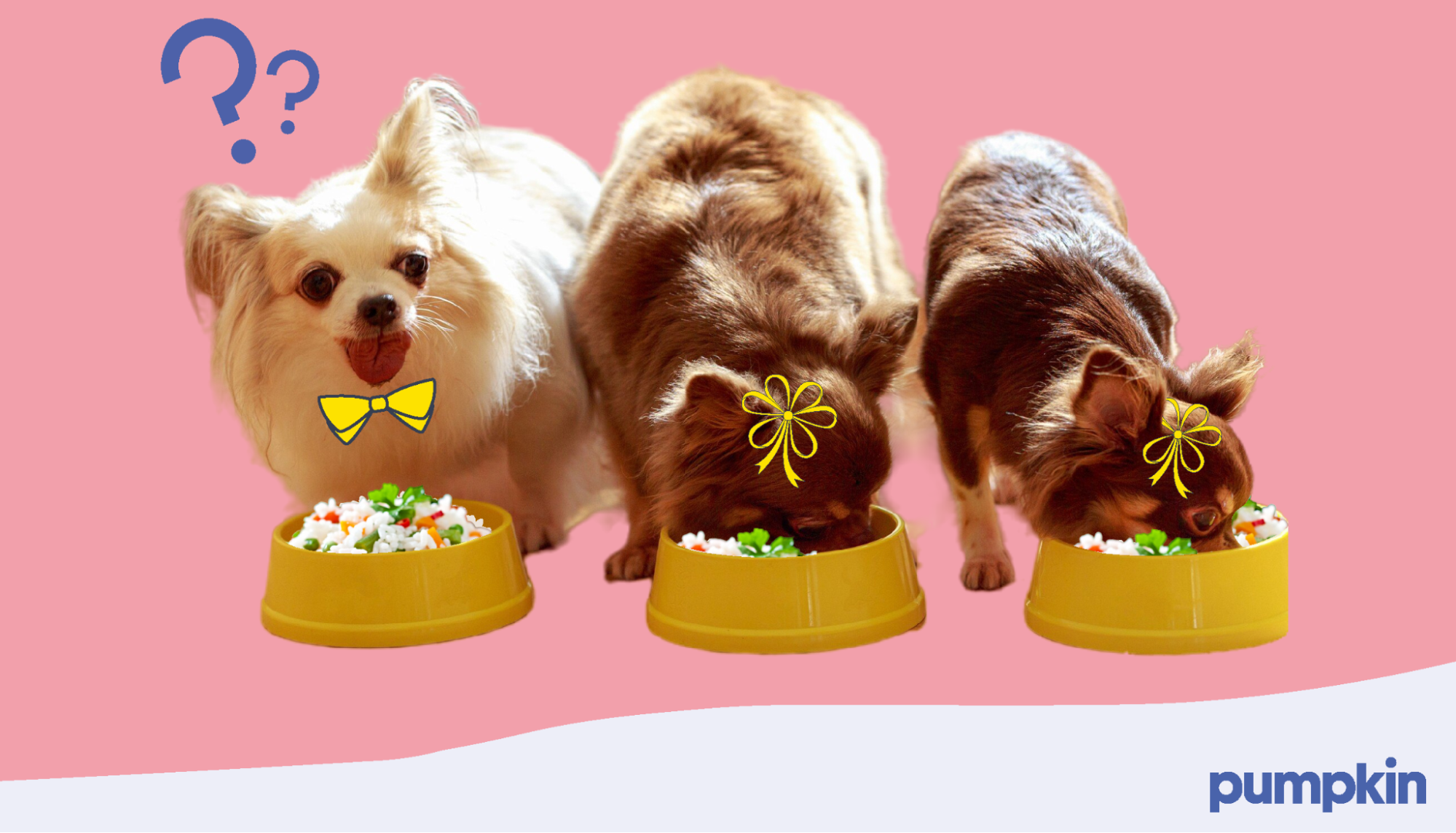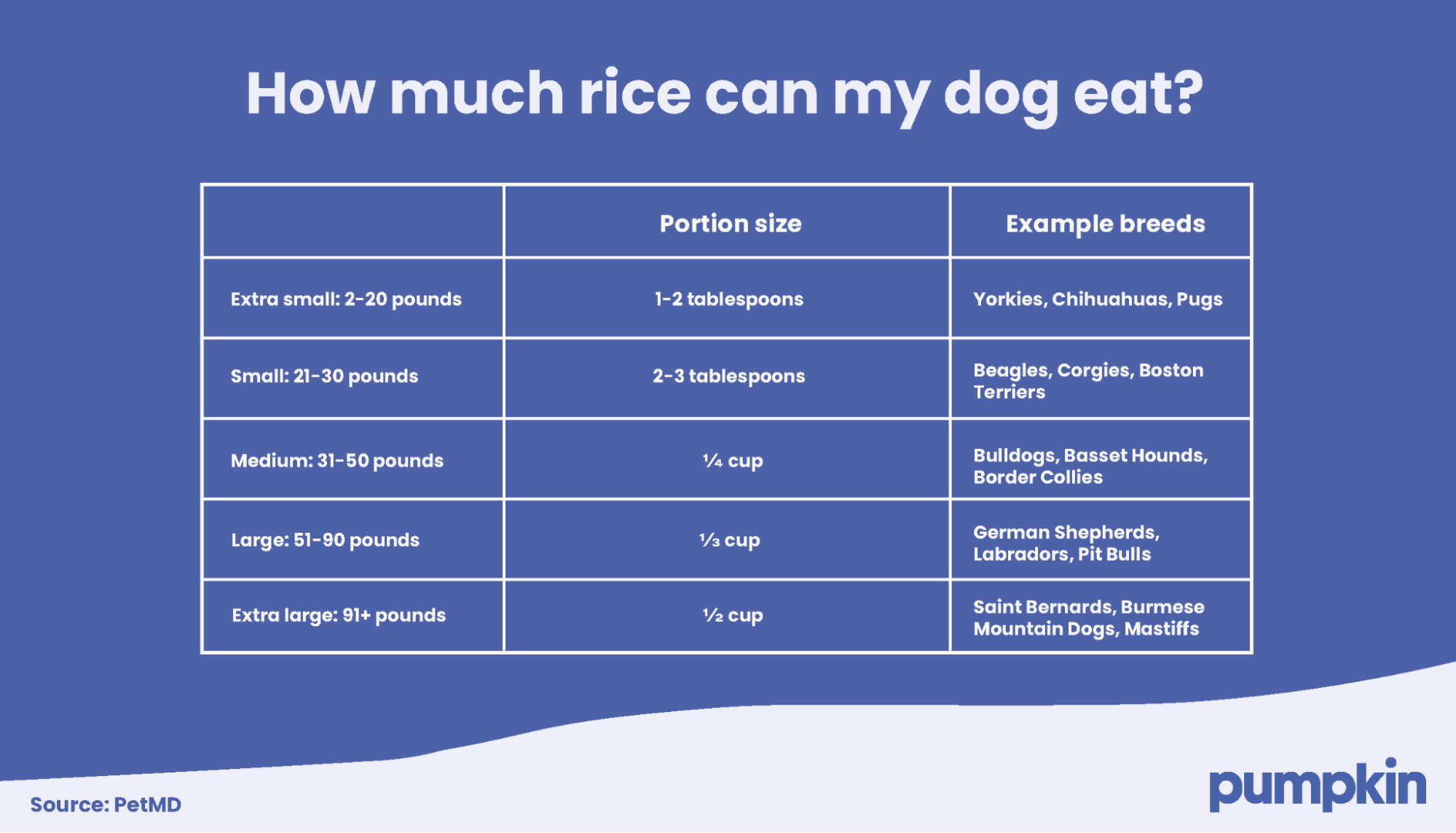- Lynn Guthrie
- Sep 29, 2024
- 6 min read
Key Points:
Yes, dogs can eat plain, cooked rice, a common ingredient in dog food.
Rice offers dogs a good energy source due to its high carbohydrate content.
Avoid feeding dogs uncooked rice or rice cooked with harmful additives.
Rice is a veterinarian-recommended home remedy for dog diarrhea.
What goes with chicken, beef, and maybe even kibble? Rice, a household staple that’s also a safe and delicious option for dogs.
Dogs can eat rice, as long as their diet includes at least 75% animal protein, too. In fact, rice is even included in many commercial dog foods. However, rice isn’t just a tasty addition to your dog’s bowl; it’s also a vet-recommended home remedy for doggy diarrhea.
Let’s take a closer look at rice, its nutritional value, and how it can soothe your dog’s upset stomach — and save your carpets from messy accidents.
Rice and dogs — nutritional insights
One cup (158g) of white, cooked long-grain rice contains:
206 calories
4.3g protein
0.4g of fat (0.1g saturated fat)
1.6mg sodium
45g carbohydrates
0.6g fiber
0.1g sugar
55.3mg potassium
0mg of cholesterol
One cup (195g) of brown, cooked long-grain rice contains:
216 calories
5g protein
1.8g fat (0.4g saturated fat)
83.9mg potassium
9.8mg sodium
45g carbohydrates
3.5g fiber
0.7g sugar
83.9mg potassium
0mg cholesterol
Is rice good for dogs?
Rice provides many health benefits for your dog as part of a balanced diet.
Here are some of the health benefits of feeding rice to your dog:
It has antioxidants that protect against disease and cognitive dysfunction in aging pets
Its calcium, phosphorus, and vitamin D levels support healthy bones
It soothes gastrointestinal issues
Its prebiotic action feeds good bacteria found in the small intestines
The fiber in rice supports regular bowel movements and improves digestion
Its high carbohydrates boost energy levels and improve cognitive function
Brown rice, specifically, is rich in vitamins and minerals, making it the healthiest addition to your dog’s diet:
Vitamins D, B1, and B6 that support your dog’s heart health and metabolism
Niacin for healthy skin, nervous system, and digestion
Calcium for strong bones, teeth, and ligaments
Phosphorus that works with calcium to strengthen bones, teeth, and ligaments
Thiamine, aka vitamin B1, supports cell production and metabolism
Magnesium that supports muscle movement and energy production
Selenium, which is essential for thyroid function, reproduction, and protecting against cell damage from oxidation
Manganese protects your dog's body from free radicals that can hurt cells
White rice vs. brown rice for dogs
White or brown? Both types of rice can be found in pet food, but they offer distinct advantages for your dog’s health.

White rice is an excellent source of carbohydrates — or starch — and can soothe an upset stomach. Since starch doesn’t get digested until it reaches the small intestines, rice acts as a prebiotic that promotes regular bowel movements and bulks up loose stool.
It's also an affordable diarrhea remedy, making it a practical choice for many pet owners. However, because it’s a fast-burning carb with a high glycemic index and can raise blood sugar levels, dogs with diabetes or overweight dogs may not tolerate it as well.
Brown rice is more nutritional than white rice, although some dogs may find it harder to digest. It’s a complex carb and burns more slowly, stabilizing blood sugar for longer. The fiber it contains can be helpful for dogs with constipation.
If you're looking for alternatives to brown or white rice, wild rice is another nutritious option packed with fiber and antioxidants. Plus, many dogs like it because of its nutty flavor. Other alternatives include basmati rice, a long-grain white rice that’s rich in carbohydrates, or Jasmine rice, a softer, long-grain rice from Thailand that’s less starchy and sticky.
A home remedy for dog diarrhea
For dogs suffering from an upset tummy or diarrhea after eating something they shouldn’t have, white rice can come to the rescue.
Vets often suggest a bland diet of white rice (without any spices or fats) and boiled chicken for dogs with digestive problems. This recipe is especially helpful for puppies with diarrhea, as it’s easy for them to digest.
White rice helps their digestive system relax and regain its balance until your dog can eat their regular kibble again. Most veterinarians will not recommend brown rice for dogs with stomach or digestion issues.
If you're hoping that a serving of rice can save your dog from stomach upset (and ruined carpets), then keep reading for preparation tips.
How much rice can my dog eat?
Most dog foods contain the correct daily amount of calories and nutrients that your dog needs for optimum health. Treats should only comprise 10% of their daily caloric intake (you can make an exception if you’re temporarily switching to a chicken and rice diet). Give them too many treats and you risk weight gain, pancreatitis, or diabetes.

Large dogs can eat about 1/3 cup of rice two or three times per week. Smaller dogs should eat much less. Remember, these recommended amounts are for dogs on a balanced food diet, with rice being served as a treat or an added ingredient in their daily meals.
Offer tiny amounts at first, then gradually increase the portion size if your dog shows no signs of digestive trouble.
Can puppies eat rice?
Yes, puppies can eat rice. Plain, cooked white rice is often recommended by veterinarians for puppies with upset stomachs or diarrhea.
However, rice should also be an addition as part of a balanced meal and not their main diet. You can start introducing rice to your puppy when they are weaning, usually around 8 weeks old.
Pet Pro Tip:If you have a dog that is prone to ‘snacksidents’ — you should consider getting a dog insurance plan as soon as possible. It can help you afford the best care in the future by covering eligible vet bills for digestive illnesses, toxic ingestion, and more.
How to prepare rice for your dog
As a general rule, keep it simple and only serve plain, cooked rice. Anytime you want to prepare rice for your dog, rinse it first to remove excess starch before cooking. Don’t add any additional seasoning or flavoring. Then, use a rice cooker or boil it in plain water until tender.
You can even throw in some vegetables and lean meats to the mixture for added nutrition and flavor. For an extra special treat, cook the rice in broth with no sodium or fats (although most dogs will happily gobble down the plain rice).
Just remember, never give your dog leftover meals cooked for people. Although curries, fried rice, or similar dishes may be tempting to share, they are often unsafe and unhealthy for your pup.
Excessive salts, soy sauce, fats, seasonings, and added onions or garlic can cause serious digestive issues or even toxicity.
The verdict: Rice is safe for dogs
Easy to digest and gentle on their system, rice is a great comfort food for your dogs, so long as it's part of a healthy, balanced diet. Brown rice is high in fiber and can help alleviate constipation, while white rice is a natural and affordable solution to soothe upset stomachs.
Just like rice is a simple solution for your dog’s tummy aches, dog insurance can be a simple solution for dealing with unexpected vet bills. Pumpkin Dog Insurance plans can help cover eligible costs at the vet if your pup gets hurt or sick in the future, making it easier for you to help them get the care they need.
FAQs
Can dogs eat rice every day?
Yes, dogs can eat rice every day as part of a balanced diet, but it shouldn’t exceed 10% of their daily calorie intake. Portion control is very important because eating too much rice can lead to weight gain. It’s often easier and safer to feed them rice 2-3 times per week to avoid overfeeding.
Does rice help dogs with diarrhea?
Yes, a diet of plain white rice served with unseasoned and boiled chicken can help dogs with loose stools and diarrhea. This bland diet is easy on their digestive system, and it can even be given to puppies (so long as they’ve already been weaned). If the diarrhea persists for more than a few days, talk to your veterinarian.
Can my dog eat rice pudding?
Plain rice pudding, made without potentially harmful ingredients like raisins or artificial sweeteners, isn’t toxic for dogs. But since it’s not the healthiest treat due to its high sugar and fat content, don’t feed it to them often.
Which dogs shouldn’t eat rice?
Rice in moderation is fine for most dogs. However, dogs with diabetes may need to avoid or limit rice intake — especially white rice, as it can cause spikes in blood sugar. Some dogs may also have certain gastrointestinal issues that make rice harder to digest. Finally, dogs with yeast-related problems should avoid rice, as it’s a superfood for yeast. Always talk to your vet if you want to make big changes to your dog’s diet or if your dog has any underlying health problems.
Can my dog eat brown rice for diarrhea?
While brown rice has lots of nutritional benefits for our pups, it’s harder for them to digest than white rice. So, if you’re feeding your dog rice to combat runny dog poop, stick to plain, cooked white rice.
REFERENCES

